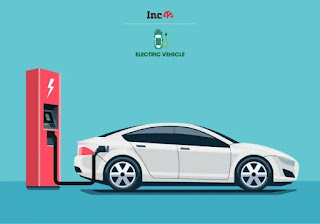 |
| information about electric cars |
Electric cars are a variety of electric vehicle (EV). The term "electric vehicle" refers to any vehicle that uses electric motors for propulsion, while "electric car" generally refers to highway-capable automobiles powered by electricity. Low-speed electric vehicles, classified as NEVs in the United States,and as electric motorized quadricycles in Europe, are plug-in electric-powered microcars or city cars with limitations in terms of weight, power and maximum speed that are allowed to travel on public roads and city streets up to a certain posted speed limit, which varies by country.
While an electric car's power source is not explicitly an on-board battery, electric cars with motors powered by other energy sources are typically referred to by a different name. An electric car carrying solar panels to power it is a solar car, and an electric car powered by a gasoline generator is a form of hybrid car. Thus, an electric car that derives its power from an on-board battery pack is a form of battery electric vehicle (BEV). Most often, the term "electric car" is used to refer to battery electric vehicles, but may also refer to plug-in hybrid electric vehicles (PHEV).
An electric car is an automobile that is propelled by one or more electric motors, using energy stored in rechargeable batteries. The first practical electric cars were produced in the 1880s. Electric cars were popular in the late 19th century and early 20th century, until advances in internal combustion engines, electric starters in particular, and mass production of cheaper gasoline vehicles led to a decline in the use of electric drive vehicles.
From 2008, a renaissance in electric vehicle manufacturing occurred due to advances in batteries, Inesses, and deaths from air pollution, and the desire to reduce greenhouse gas emissions. Several national and local governments have established government incentives for plug-in electric vehicles|tax credits, subsidies, and other incentives to promote the introduction and adoption in the mass market of new electric vehicles, often depending on battery size, their electric range and purchase price. The current maximum tax credit allowed by the US Government is US$7,500 per car. Compared with internal combustion engine cars, electric cars are quieter, have no tailpipe emissions, and lower emissions in general.
Charging an electric car can be done at a variety of charging stations, these charging stations can be installed in both houses and public areas.The two all-time best selling electric cars, the Nissan Leaf and the Tesla Model S, haveEPA-rated ranges reaching up to
243 km (151 miles) and 600 km (370 miles) respectively. The Leaf is the best-selling highway-capable electric
car ever with more than 400,000 units sold,followed by the Tesla Model S with over 400,000 units sold worldwide by June 2019.
As of December 2018, there were about 5.3 million light-duty all-electric and plug-in hybrid vehicles in use around the world.Despite the rapid growth experienced, the global stock of plug-in electric cars represented just about 1 out of every 250 vehicles (0.40%) on the world's roads by the end of 2018. The plug-in car market is shifting towards fully electric battery vehicles, as the global ratio between annual sales of battery BEVs and PHEVs went from 56:44 in 2012, to 60:40 in 2015, and rise to 69:31 in 2018.




கருத்துகள் இல்லை:
கருத்துரையிடுக